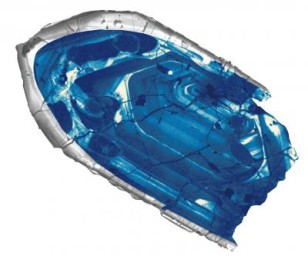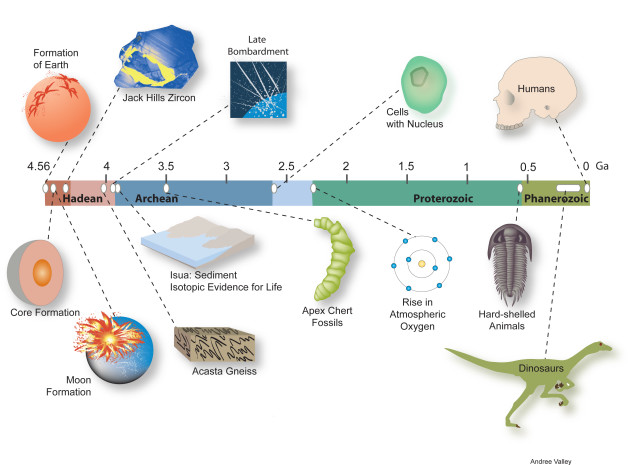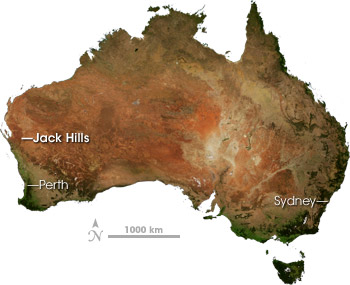
A 4.4 billion-year-old zircon crystal provides insight into how the early Earth cooled from a ball of magma 160 million years after the solar system formed. (John Valley)
A tiny sliver of ancient zircon reveals the crust of our planet formed at least 4.4 billion years ago—160 million years after the birth of the solar system, according to a new study.
Earth itself is believed to be about 4.5 billion years old.
The researchers examined some of the oldest materials ever found on the planet to reach their conclusions, which were published in Nature Geoscience.
They say the ancient zircon provides evidence Earth cooled from a blazing ball of fire covered by a magma ocean much more quickly than previously thought.
“This confirms our view of how the Earth cooled and became habitable,” said research leader John Valley, a professor of geoscience at the University of Wisconsin, Madison. “This may also help us understand how other habitable planets would form.”
Valley said that his team’s study provides further support for the “cool early Earth” theory which suggests the planet’s temperatures dropped low enough to allow liquid water to accumulate and pool into oceans soon after Earth’s crust formed from molten rock..
The team’s work follows up previous studies which used lead isotopes to date the zircon crystals found in the Jack Hills region of Western Australia.
Research from Valley’s team showed the zircons crystallized some 4.4 billion years ago as Earth cooled from its previous molten state. They were also able to confirm the Australian zircon crystals they studied were the oldest known material of any kind to form on Earth.
“The study reinforces our conclusion that Earth had a hydrosphere before 4.3 billion years ago,” and possibly life not long after, Valley said.

A timeline of the history of our planet places the formation of the Jack Hills zircon and a
“cool early Earth” at 4.4 billion years ago. (Andree Valley)
The researchers used a new technique called atom-probe tomography, as well as secondary ion mass spectrometry, to make their findings.
These research methods allowed the team to calculate the mass of individual atoms of lead contained within the zircon sample.
In doing so, the researchers were able to precisely measure both the zircon’s age as well as its thermal history.
Valley said he and his team noticed the lead atoms were clustered together, rather than being randomly scattered throughout the sample, as had been predicted.
They were like “raisins in a pudding,” he said.
The researchers found those clumps of lead atoms formed one billion years after the zircon crystallized. The lead atoms themselves, according to the scientists, had been created by the radioactive decay of uranium and were then disbursed into clusters within the zircon when the crystals were reheated.

Location of the Jack Hills in Australia where the oldest piece of Earth’s crust was found (NASA)
“The zircon formed 4.4 billion years ago, and at 3.4 billion years, all the lead that existed at that time was concentrated in these hotspots,” Valley said. “This allows us to read a new page of the thermal history recorded by these tiny zircon time capsules. The Earth was assembled from a lot of heterogeneous material from the solar system.”
Early in its existence, Earth underwent an intense bombardment of meteors and about 4.5 billion years ago, also collided with an object the size of Mars.
This massive collision “formed our moon, and melted and homogenized the Earth. Our samples formed after the magma oceans cooled and prove that these events were very early,” said Valley.





















The central problem for scientists is none knows what time actually is. It acts on the material world (Hegel) but has the characteristic that it cannot be got back. Do not confuse Time with energy which may be got back. Everything we know has time in it. Time dates everything while It may be found.